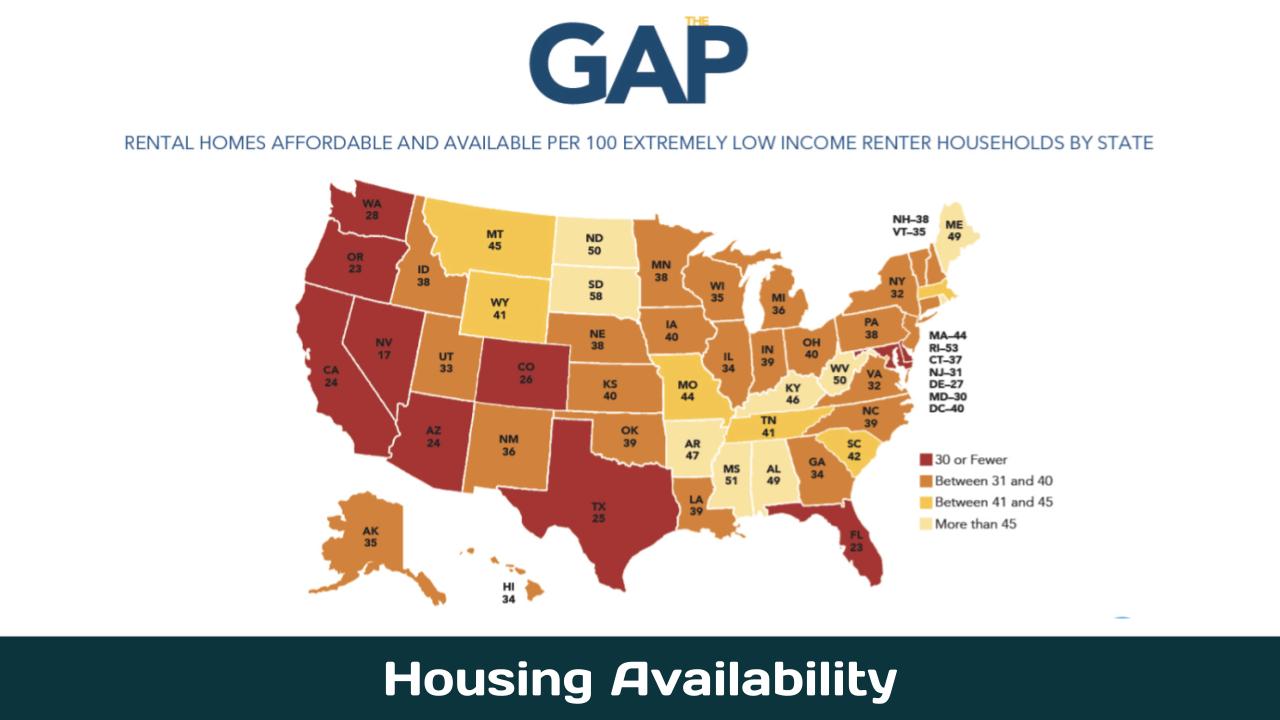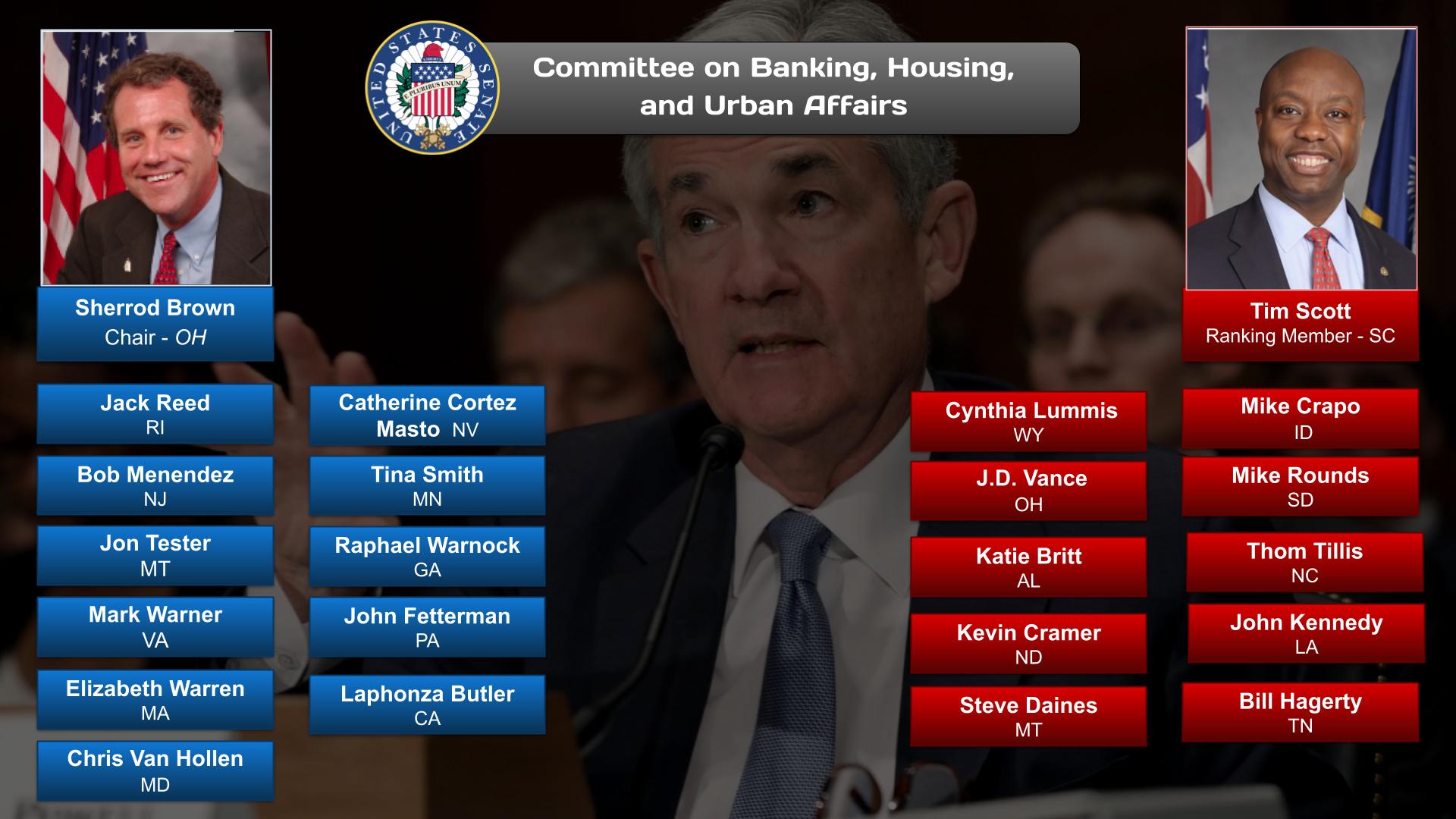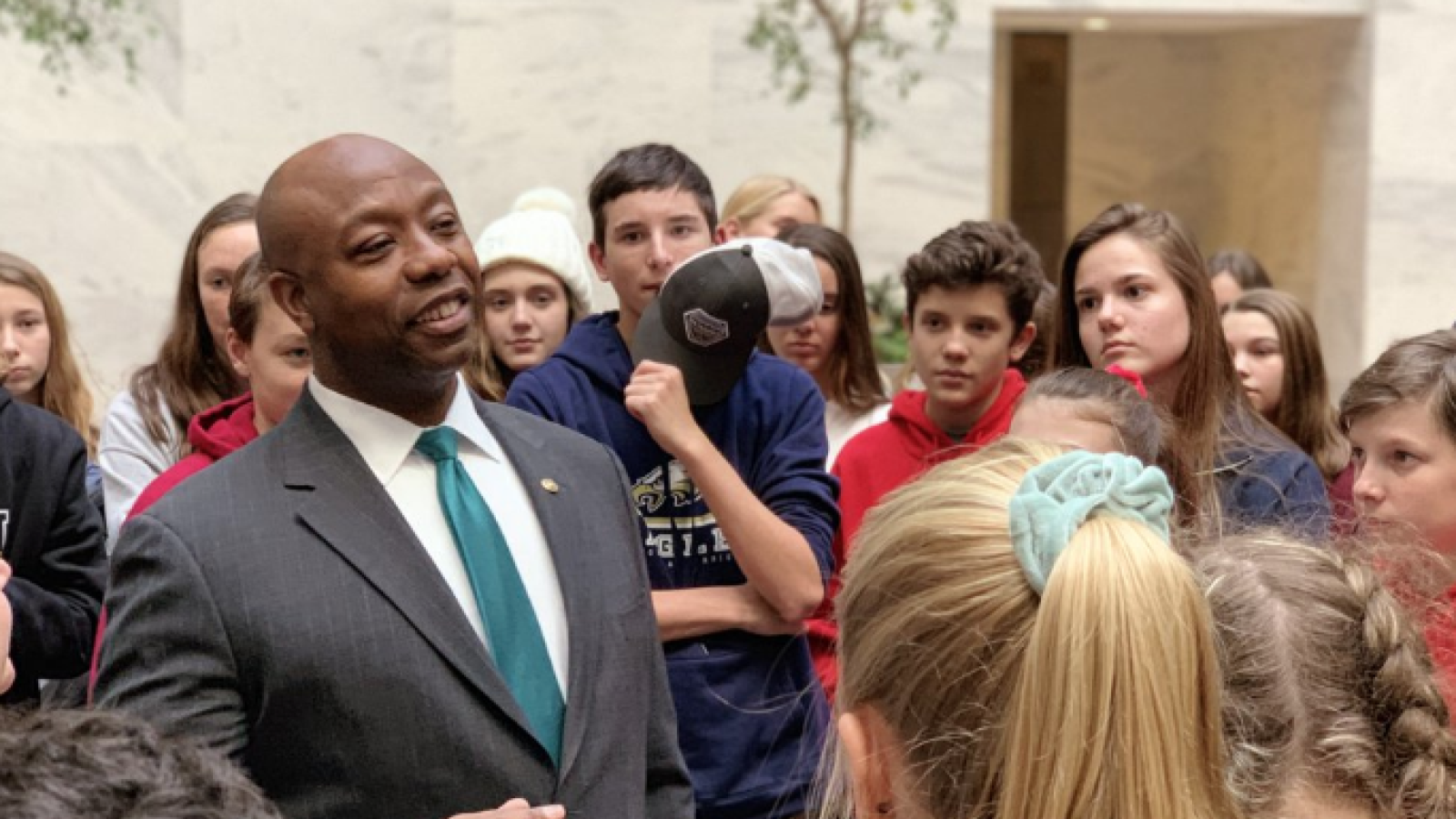Summary
This post on Housing Availability is 1 of 3 issues that US onAir curators are focusing on in the Food & Housing category.
The term housing crisis refers to acute failures in the housing market at a given place and time. Depending on the context and the speaker, the term has taken on substantially different meanings. A prominent current use, for example, refers to shortages of available housing in the United States and other countries, but it has also been used to describe financial crises related to the real estate sector.
Following the first definition, the term “Housing crisis” or “affordability crisis” is currently used in the United States and other English-speaking countries to refer to widespread shortages of housing in certain regions where people want to live. These shortages, caused in part by regulatory barriers to new construction, have had consequences such as elevated regional homelessness, housing insecurity, and high housing costs. Within this context, the term housing crisis has been applied to a number of different manifestations, with different
Source: Wikipedia
OnAir Post: Housing Availability
News
PBS NewsHour – March 18, 2024 (10:00)
Unlike other social safety net programs that continue to expand, federal housing assistance has shrunk to its lowest level in nearly 25 years, even as homelessness and rental prices have hit historic highs. Today, only one in four households that are eligible for federal housing assistance actually receive it. Stephanie Sy examines why for our series, America’s Safety Net
About
Check the Food & Housing post for the party positions, committees, government agencies related to Housing Availability issues.
Challenges
Rising Land and Construction Costs:
- Increasing land and labor costs, material shortages, and supply chain disruptions make it expensive to build new housing.
- This impacts affordability and limits the supply of affordable homes.
2. Zoning Restrictions and NIMBYism:
- Restrictive zoning laws and bureaucratic processes limit the development of new housing, especially in desirable areas.
- Local opposition to new construction (NIMBYism) can delay or block projects.
3. Limited Government Funding and Incentives:
- Insufficient government funding for affordable housing programs reduces the supply of subsidized and rent-controlled units.
- Lack of incentives for developers to build affordable housing makes it financially unattractive.
4. Demographic Shifts and Aging Population:
- Population growth, particularly in urban areas, increases demand for housing.
- An aging population requires more accessible and affordable housing options.
5. Lack of Diversity in Housing Stock:
- Limited diversity in housing types and sizes does not cater to the needs of different households.
- The shortage of smaller, affordable units is particularly acute.
6. Unstable Financial Markets:
- Economic downturns and rising interest rates can make it challenging for households to qualify for mortgages and maintain housing stability.
- This exacerbates homelessness and housing insecurity.
7. Climate Change and Environmental Regulations:
- Climate change impacts, such as natural disasters and sea-level rise, increase the need for resilient and affordable housing.
- Environmental regulations can add costs to construction and limit the use of certain materials.
8. Technological Disruption:
- Advancements in technology, such as online marketplaces and home-sharing platforms, can disrupt traditional housing markets.
- This may lead to increased competition and affordability challenges for renters and homeowners.
9. Gentrification and Displacement:
- Rising property values in desirable urban areas can displace lower-income residents.
- Gentrification makes housing less affordable for established communities.
10. Homelessness and Housing Insecurity:
- A lack of affordable housing options and support services contributes to homelessness and housing insecurity.
- This affects individuals and families, as well as the broader community.
Source: Google Search + Gemini + onAir curation
Solutions
Increase Supply:
- Encourage new construction: Provide incentives for developers to build affordable and workforce housing.
- Convert existing buildings: Allow for the conversion of commercial or industrial spaces into residential units.
- Utilize vacant or underutilized land: Identify and rezone areas for housing development.
2. Preserve and Protect Existing Stock:
- Prevent displacement: Implement policies to protect vulnerable tenants from eviction and rent increases.
- Invest in maintenance and repairs: Provide funding for property owners to maintain and improve existing units.
- Coordinate with non-profits: Support non-profit organizations that provide housing assistance and preserve affordable housing.
3. Streamline Regulations:
- Simplify permitting processes: Reduce bureaucratic barriers and streamline the approval process for new housing development.
- Eliminate exclusionary zoning: Revise zoning codes to allow for higher density and mixed-use development.
- Provide incentives for accessibility: Waive or reduce fees for projects that include accessible features.
4. Promote Affordable Housing Development:
- Provide tax credits and subsidies: Offer financial incentives to developers and builders who create affordable housing.
- Establish rental assistance programs: Assist low-income households with rental payments through government or non-profit programs.
- Develop community land trusts: Acquire and hold land for affordable homeownership.
5. Explore Innovative Solutions:
- Tiny homes and modular construction: Encourage the development of smaller, more affordable housing units.
- Shared housing and co-housing: Promote models where multiple individuals or families share living spaces.
- Adaptive reuse: Convert unconventional buildings, such as warehouses or schools, into housing.
6. Address Root Causes of Housing Unaffordability:
- Increase wages and economic mobility: Promote policies that provide pathways to financial stability for low-income households.
- Reduce wealth inequality: Address systemic factors that contribute to the concentration of wealth and access to housing.
- Invest in public transportation: Provide affordable and accessible transportation options to reduce the cost of living for households.
7. Collaboration and Partnerships:
- Engage with stakeholders: Consult with community groups, developers, non-profits, and government agencies to develop comprehensive solutions.
- Leverage public-private partnerships: Foster partnerships between public entities and private developers to increase housing production.
- Seek federal and state support: Advocate for policies and funding from higher levels of government to address housing challenges.
Source: Google Search + Gemini + onAir curation
Websites
Government Agencies
- Department of Housing and Urban Development (HUD): https://www.hud.gov
- Federal Housing Finance Agency (FHFA): https://www.fhfa.gov
- Freddie Mac: https://www.freddiemac.com
- Fannie Mae: https://www.fanniemae.com
Nonprofit Organizations
- National Low Income Housing Coalition (NLIHC): https://nlihc.org
- National Housing Trust: https://nationalhousingtrust.org
- Habitat for Humanity: https://www.habitat.org
- Enterprise Community Partners: https://www.enterprisecommunity.org
- Local Initiatives Support Corporation (LISC): https://www.lisc.org
Industry Associations
- National Association of Home Builders (NAHB): https://www.nahb.org
- National Multifamily Housing Council (NMHC): https://www.nmhc.org
- National Apartment Association (NAA): https://www.naahq.org
Research Institutions
- Brookings Institution: https://www.brookings.edu
- Urban Institute: https://www.urban.org
- Joint Center for Housing Studies of Harvard University: https://www.jchs.harvard.edu
Other Resources
- Zillow: https://www.zillow.com
- Trulia: https://www.trulia.com
- Apartments.com: https://www.apartments.com
- National Rental Association: https://www.nra.org
- Affordable Housing Online: https://affordablehousingonline.com
Source: Google Search + Gemini + onAir curation
Legislation
Laws
Source: Google Search + Gemini + onAir curation
National Housing Act of 1934
- Created the Federal Housing Administration (FHA) to provide mortgage insurance to low- and moderate-income homebuyers.
- Led to the construction of millions of affordable homes, increasing housing availability.
2. Housing and Community Development Act of 1974
- Established the Community Development Block Grant (CDBG) program, providing funding to local governments for housing rehabilitation and construction.
- Has helped preserve and create thousands of affordable housing units.
3. Fair Housing Act of 1968
- Prohibits discrimination in housing based on race, color, religion, national origin, sex, familial status, or disability.
- Ensures that all individuals have equal access to housing opportunities.
4. Low-Income Housing Tax Credit (LIHTC)
- Created by the Tax Reform Act of 1986, this tax credit encourages private investors to finance affordable housing developments.
- Has led to the construction and preservation of millions of affordable housing units.
5. Housing and Economic Recovery Act of 2008 (HERA)
- Provided funding for the Troubled Asset Relief Program (TARP), which stabilized the housing market and prevented a deeper recession.
- Included provisions to support low-income homeowners and prevent foreclosures.
6. Dodd-Frank Wall Street Reform and Consumer Protection Act (Dodd-Frank)
- Includes provisions to prevent predatory lending practices, which have contributed to housing instability.
- Established the Consumer Financial Protection Bureau (CFPB) to protect consumers from financial harm.
7. Bipartisan Housing Stability Act of 2010
- Reauthorized key housing programs, including CDBG and LIHTC.
- Included provisions to provide rental assistance to homeless individuals and families.
8. Expanding Housing Options Grant Program (EHOG)
- Created by the American Rescue Plan Act of 2021, this program provides grants to states, local governments, and non-profit organizations to address housing affordability challenges.
- Funds can be used for rental assistance, down payment assistance, and homebuyer education programs.
9. Federal Housing Finance Reform and Disaster Recovery Act of 2022
- Contains provisions to support affordable housing development and homeownership stability.
- Includes funding for the Capital Magnet Fund, which provides grants to community development financial institutions (CDFIs) to make loans for affordable housing projects.
New Bills
Source: Google Search + Gemini + onAir curation
Sampling of Bills:
H.R.3848 —Housing our Military Veterans Effectively Act of 2023
Sponsor: Chavez-DeRemer, Lori [Rep.-R-OR-5] (Introduced 06/06/2023)
Cosponsors: (4)
Committees: House – Veterans’ Affairs | Senate – Veterans’ Affairs
Committee Report: H. Rept. 118-189
Latest Action: Senate – 12/06/2023 Received in the Senate and Read twice and referred to the Committee on Veterans’ Affairs. (All Actions)
S.32 — Choice in Affordable Housing Act of 2023
Sponsor: Coons, Christopher A. [Sen.-D-DE] (Introduced 01/24/2023)
Cosponsors: (5)
Committees: Senate – Banking, Housing, and Urban Affairs
Latest Action: Senate – 04/26/2023 Committee on Banking, Housing, and Urban Affairs. Hearings held. (All Actions)
H.R.5254 — Housing for All Act of 2023
Sponsor: Lieu, Ted [Rep.-D-CA-36] (Introduced 08/22/2023)
Cosponsors: (15)
Committees: House – Financial Services; Judiciary; Energy and Commerce; Transportation and Infrastructure
Latest Action: House – 08/25/2023 Referred to the Subcommittee on Environment, Manufacturing, and Critical Materials. (All Actions)
H.R.6199 —Build More Housing Near Transit Act of 2023
Sponsor: Peters, Scott H. [Rep.-D-CA-50] (Introduced 11/02/2023)
Cosponsors: (16)
Committees: House – Transportation and Infrastructure
Latest Action: House – 11/14/2023 Referred to the Subcommittee on Railroads, Pipelines, and Hazardous Materials. (All Actions)
Affordable Housing Production and Preservation
- Neighborhood Homes Investment Act (S. 224 and H.R. 629): Provides tax incentives and grants for the production and preservation of affordable housing units.
- Housing Affordability Fund (H.R. 1058): Establishes a $10 billion fund to support construction, rehabilitation, and rental assistance for affordable housing.
- Downpayment Toward Equity Act (S. 1381 and H.R. 2327): Provides down payment assistance to first-time homebuyers with modest incomes.
- American Dream downpayment and Savings Act (H.R. 2135): Creates a savings account program for low-income homebuyers to save for their down payment.
Supply-Side Measures
- End Zoning Discrimination Act (S. 1359 and H.R. 2528): Prohibits zoning laws that restrict the construction of new housing units.
- Build More Housing Act (S. 1091 and H.R. 261): Provides incentives for local governments to approve new housing construction.
- HOME Act (S. 1667 and H.R. 3702): Provides grants to states and localities for infrastructure improvements that support new housing development.
Tenant Protections
- Tenant Protection Act (H.R. 2906 and S. 1157): Expands tenant protections, such as Just Cause Eviction, rent stabilization, and eviction prevention programs.
- Rental Assistance Expansion Act (S. 1673 and H.R. 3703): Provides additional funding for rental assistance programs, such as Section 8 vouchers.
- Eviction Prevention Act (H.R. 2866): Creates a federal eviction prevention program to provide financial assistance and legal representation to tenants facing eviction.
Other Initiatives
- Homelessness Assistance and Prevention Act (H.R. 5066): Provides funding and resources for homeless prevention and services.
- Community Development Block Grant (CDBG) Reauthorization (S. 430): Reauthorizes and expands funding for CDBG programs, which support affordable housing and community development.
- Neighborhood Reinvestment Act (H.R. 1377): Provides grants for community-based organizations to revitalize low-income neighborhoods and increase housing opportunities.
Committees, Agencies, & Programs
Committees
Source: Google Search + Gemini + onAir curation
Senate Committees:
- Banking, Housing, and Urban Affairs Committee:
- Jurisdiction over all housing-related policies, including affordable housing, mortgage finance, and community development.
- Finance Committee:
- Oversight of tax policies that impact housing affordability, such as the mortgage interest deduction and the low-income housing tax credit.
- Judiciary Committee:
- Jurisdiction over fair housing laws and regulations designed to prevent discrimination in housing.
House Committees:
- Financial Services Committee:
- Subcommittees on Housing, Community Development, and Insurance; and Consumer Protection and Financial Institutions: responsibilities include oversight of housing finance, affordable housing, and consumer protection in housing matters.
- Transportation and Infrastructure Committee:
- Subcommittee on Housing, Community Development, and Insurance: focuses on affordable housing, community development, and housing infrastructure.
- Judiciary Committee:
- Subcommittee on Civil Rights and Liberties: responsible for protecting civil rights, including those related to housing discrimination.
Joint Committees:
- Joint Economic Committee:
- Conducts hearings and studies on economic issues, including housing affordability.
Other Relevant Committees:
- House Select Committee on the Climate Crisis:
- Considers the impact of climate change on housing and infrastructure.
- House Committee on Small Business:
- Supports small businesses, including those involved in housing development and financing.
- House Agriculture Committee:
- Jurisdiction over rural housing programs.
- Senate Committee on Veterans’ Affairs:
- Oversight of housing assistance programs for veterans.
Government Agencies
Source: Google Search + Gemini + onAir curation
Department of Housing and Urban Development (HUD)
- Mission: Enforces fair housing laws, provides affordable housing assistance, and revitalizes communities.
- Programs: Section 8, Public Housing, Rental Assistance Demonstration, Housing Choice Vouchers
Federal Housing Finance Agency (FHFA)
- Mission: Oversees the nation’s housing market, including Fannie Mae and Freddie Mac.
- Programs: Enforces lending standards, promotes affordable housing, and stabilizes the housing market.
U.S. Department of Agriculture (USDA)
- Mission: Supports rural America, including housing and infrastructure development.
- Programs: Single-Family Housing Guaranteed Loan Program, Rural Rental Assistance Program
Department of Treasury
- Mission: Manages the federal government’s finances, including housing-related tax incentives.
- Programs: Mortgage Interest Deduction, Low-Income Housing Tax Credit
Department of Justice
- Mission: Enforces federal laws, including fair housing and anti-discrimination laws.
- Programs: Fair Housing Act, Civil Rights Act
Government National Mortgage Association (Ginnie Mae)
- Mission: Makes homeownership more affordable by providing guarantees for mortgage-backed securities.
- Programs: Ginnie Mae Mortgage-Backed Securities
Federal Home Loan Bank System (FHLBank System)
- Mission: Provides liquidity and support to the housing market.
- Programs: Affordable Housing Program, Community Investment Program
Federal Reserve
- Mission: Conducts monetary policy to promote economic growth and stability.
- Programs: Affects interest rates and the availability of mortgage financing.
Consumer Financial Protection Bureau (CFPB)
- Mission: Protects consumers in the financial marketplace, including those seeking housing loans.
- Programs: Regulates mortgage lending practices, provides consumer education
Programs & Initiatives
Source: Google Search + Gemini + onAir curation
Section 8 Housing Choice Voucher Program:
- Provides rental subsidies to eligible low-income households to cover a portion of their rent.
- Vouchers can be used in the private rental market, allowing for greater flexibility.
2. Low-Income Housing Tax Credit (LIHTC):
- Provides tax credits to developers who build or rehabilitate affordable rental housing.
- Incentivizes investment in housing for low-income families.
3. HOME Investment Partnerships Program:
- Provides grants to state and local governments to develop and support affordable housing.
- Can be used for a variety of purposes, including homeownership assistance, rental subsidies, and housing rehabilitation.
4. Community Development Block Grant (CDBG):
- Provides flexible grants to cities and counties for a range of community development activities, including affordable housing.
- Can be used to acquire or rehabilitate land, construct new housing, provide rental assistance, and support community revitalization efforts.
5. Public Housing:
- Federally owned and operated housing specifically designed for low-income families.
- Provides affordable units at below-market rents.
6. Housing Choice Vouchers for the Elderly and Disabled:
- Similar to Section 8 vouchers, but specifically targeted to low-income elderly and disabled individuals.
7. Fair Housing Act:
- Prohibits housing discrimination based on race, color, religion, sex, familial status, national origin, and disability.
- Helps ensure equal access to housing for all Americans.
8. Tenant-Based Rental Assistance (TBRA):
- Provides rental assistance to individuals and families who are temporarily displaced due to natural disasters or other emergencies.
9. Shelter Plus Care:
- Provides rental assistance and support services to homeless individuals with disabilities or serious mental illness.
10. Housing for the Future:
- A White House initiative launched in 2021 to address housing challenges through increased investment, expanded access to homeownership, and support for affordable housing.
Self-Help Homeownership Opportunity Program (SHOP)
Source: HUD
The Self-Help Homeownership Opportunity Program (SHOP) awards grant funds to eligible national and regional nonprofit organizations and consortia to purchase home sites and develop or improve the infrastructure needed to set the stage for sweat equity and volunteer-based homeownership programs for low-income persons and families. SHOP funds must be used for eligible expenses to develop decent, safe and sanitary non-luxury housing for low-income persons and families who otherwise would not become homeowners. Homebuyers must be willing to contribute significant amounts of their own sweat equity toward the construction or rehabilitation of their homes.
SHOP is authorized by the Housing Opportunity Program Extension Act of 1996, Section 11, and is subject to other federal crosscutting requirements. No separate program regulations exist. All program requirements are listed in the applicable SHOP Notice of Funding Opportunity (NOFO).
Department of Housing and Urban Development
More Information
Nonpartisan Organizations
Source: Google Search + Gemini + onAir curation
- National Low Income Housing Coalition (NLIHC): Advocates for affordable rental housing for low-income families and individuals.
- Center on Budget and Policy Priorities (CBPP): Analyzes federal and state budget policies, including housing subsidies and affordable housing programs.
- Urban Institute: Conducts research and policy analysis on housing, economic development, and social welfare.
- Bipartisan Policy Center (BPC): Develops policy solutions on a range of issues, including housing access.
- Enterprise Community Partners: Invests in affordable housing development and provides technical assistance to communities.
- Habitat for Humanity International: Builds and rehabilitates affordable homes for families in need.
- National Alliance to End Homelessness: Advocates for policies and programs to end homelessness.
- National Association of Realtors (NAR): Represents the interests of real estate professionals and advocates for policies that promote homeownership.
- National Apartment Association (NAA): Represents the interests of multifamily housing owners and advocates for policies that support affordable rental housing.
- Mortgage Bankers Association (MBA): Represents the interests of mortgage professionals and advocates for policies that promote responsible homeownership.
- Joint Center for Housing Studies of Harvard University: Conducts research and analysis on housing markets and policies.
- RAND Corporation: Conducts research and analysis on a range of policy issues, including housing.
- Center for American Progress (CAP): Conducts research and policy analysis on economic and social issues, including housing affordability.
- Brookings Institution: Conducts research and analysis on a range of policy issues, including housing and urban development.
Partisan Organizations
Source: Google Search + Gemini + onAir curation
Democratic Organizations
- National Low Income Housing Coalition (NLIHC): Advocates for federal policies that promote affordable housing and supports low-income renters.
- Center on Budget and Policy Priorities (CBPP): Provides research and analysis on housing affordability, including the impact of federal tax and budget policies.
- National Alliance to End Homelessness (NAEH): Works to prevent and end homelessness, including by advocating for affordable housing.
- Habitat for Humanity International: A non-profit organization that builds and repairs homes for low-income families.
Republican Organizations
- National Association of Realtors (NAR): Represents real estate agents and brokers, and advocates for policies that support homeownership and property rights.
- National Apartment Association (NAA): Represents apartment owners and operators, and advocates for policies that promote the rental housing industry.
- American Enterprise Institute (AEI): A conservative think tank that publishes research and analysis on housing affordability, often advocating for free market solutions.
- Manhattan Institute for Policy Research: Another conservative think tank that focuses on housing and urban policy, supporting policies that promote economic growth and innovation.
“Housing crisis” (Wiki)
Contents
The term housing crisis refers to acute failures in the housing market at a given place and time. Depending on the context and the speaker, the term has taken on substantially different meanings.[1] A prominent current use, for example, refers to shortages of available housing in the United States and other countries, but it has also been used to describe financial crises related to the real estate sector.
Following the first definition, the term “Housing crisis” or “affordability crisis” is currently used in the United States and other English-speaking countries to refer to widespread shortages of housing in certain regions where people want to live. These shortages, caused in part by regulatory barriers to new construction, have had consequences such as elevated regional homelessness, housing insecurity, and high housing costs. Within this context, the term housing crisis has been applied to a number of different manifestations, with different causes and consequences. One California housing researcher, for example, chronicled at least thirteen ways in which the term “housing crisis” has been applied to shortage and affordability issues, indicating that there is not one “housing crisis” but instead a “web of problems and dysfunctions”.[2] Even in regions that are not experiencing an overall housing shortage, for example, the term housing crisis has been used to refer to a shortages for specific segments of the population, such as a shortage of dedicated affordable housing for very-low income populations or permanent supportive housing for those with disabilities.
As a second definition, the term has also been used to refer to financial crises tied to the housing sector, conceptually distinct from issues related to housing shortages. In the past, the term was used in the United States to refer to problems in the financial sector related to instruments tied to housing, such as the sub-prime mortgage crisis of 2007-2008. Similarly, “housing crisis” has been used to describe financial problems in the Chinese property sector that began in 2020 and are ongoing.
“Housing crisis” as shortage and affordability crisis
The first use of the term “housing crisis” discussed here refers to the related issues of decreasing housing affordability and worsening housing shortages.
Global housing crisis
Cities around the world are facing an “affordability crisis” as part of a long run trend that has persisted for decades.
Economists debate the causes of this affordability crisis. The state of the debate as of 2022 was summarized by economists Christian Hilber and Olivier Schöni in a contribution to the Oxford Research Encyclopedia of Economics and Finance:
“Three strands of the literature can be distinguished. The first is a strand of the urban economics literature, which highlights the importance of local long-run supply constraints, especially land use restrictions, in conjunction with local longrun demand growth, as crucial determinants of high and growing house costs. The second strand emphasizes macroeconomic factors and financing conditions. It argues that a unique macroeconomic environment with a decline in the real rate of interest (influenced by central banks) or unprecedented availability of housing credit may explain a significant fraction of the increase in house prices over the last two decades. The third strand focuses on the role of unrealistic expectations about future house price growth.”[3]
Of the three strands, “the main underlying cause for the ‘affordability crisis’, which has been mounting for decades, is a combination of strong and growing demand for housing in desirable areas in conjunction with tight long-run supply constraints, both physical and man-made regulatory ones.”[3]
Although major cities around the world face housing shortages, leading to the use of the term “Global housing crisis,” substantial variation exists across countries and across planning systems.[4] Among developed countries, for example, cities in Japan have relatively abundant and affordable housing for their size, which some have attributed to nationalized control of zoning and easy permitting for housing construction. English-speaking countries, on the other hand, stand out for planning systems that enable NIMBY obstruction of housing, with prices rising and housing falling into shortage as a result. Developed European countries, which favor higher density construction than Anglophone countries, have followed a path intermediate between these two.[5]
Current U.S. housing crisis (shortage and affordability crisis)
The United States currently faces a housing crisis defined by shortages of housing that differ in scope and effect depending on region or segment of the population.
Market-wide housing shortages in high-demand areas
Decades of under-building in economically prosperous metros has led to regional housing shortages with national implications. In the 19th century, housing development in the United States was characterized by rapid urban growth in economically productive places.[6] Throughout the 20th century, however, a number of regulations that were designed to block in-fill and direct greenfield development took hold, such as exclusionary zoning. These regulations had the net effect of reducing housing construction and reducing the ability of regional housing stock to adjust to changing market conditions. Beginning in the last quarter of the 20th century, market-wide housing shortages have existed in a growing number of markets throughout the country, starting in prosperous coastal regions, such as Boston, New York, or the California Bay Area.[7] In the last two decades, these shortages have spread from coastal superstar cities to affect broader areas of the country, so that on average there is a deficit of housing nationwide.[8] Rental vacancy rates, for example, which are one marker of the balance of housing supply, have declined across the country. While, in a balanced market, rental vacancy rates should fall between 7 and 8 percent, only one U.S. census region, the South, achieved target levels on average in its metro areas as of 2021.[9]
These regional housing shortages have had nationwide effects. Rates of migration within the United States have fallen, housing costs have risen in areas that would otherwise provide quality jobs, and incomes from region to region have increasingly diverged.[6]
Within areas experiencing these shortages, effects are especially acute among the young, the poor, among renters, those living in crowded conditions, and those experiencing homelessness. Areas with market-wide housing shortages have significantly higher rates of homelessness than those with adequate or surplus housing stock: Variations in rent-levels and vacancies are chief factors explaining regional variations in homelessness rates.[10]
Specific regional housing shortages
For more information on specific regional housing shortages, see the articles for California and New York in this encyclopedia:
Additional regional housing shortages are discussed in articles addressing the homelessness crisis:
Nationwide shortages of dedicated-affordable and supportive housing
In addition to market-wide housing shortages in certain regions of the United States, the term “housing crisis” has been used to describe persistent shortages of non-commodity and supportive housing provided to vulnerable members of the population. Even in regions with relatively abundant market-rate housing, the market can fail to supply safe and sufficient housing to populations with very low income or disabilities that impair independent living. Insufficient public funding has contributed to a distinct housing crisis affecting these groups.[11][12] Even regions with relatively abundant housing supply and low rates of homelessness, such as Mississippi, face challenges with street homelessness due to factors like addiction, as well as issues with housing quality.[13]
Shortages of housing affordable housing are discussed in the article “Housing gap” under the section “United States.”
In addition to shortage and affordability issues, the term “housing crisis” has been used for overlapping concepts such as a “fair housing crisis,” involving residential discrimination and effects of segregation; an “eviction crisis”; issues of gentrification and displacement; and environmental concerns. Eviction, displacement, and forms of housing inequality are worsened by and related to the shortage and affordability crisis, but also have causes of their own and require distinct solutions.[2][14]
Housing crises in other countries (shortage and affordability crises)
United Kingdom
Market-wide housing shortages in high demand regions
The United Kingdom faces regional shortages of housing, with undersupply and high demand in the south, relative to more abundant housing in economically depressed areas of the north.[15]
- Affordability of housing in the United Kingdom
- Welsh housing crisis, see Housing and construction in Wales
See also:
Historic housing crises (shortage and affordability crises)
- Amsterdam coronation riots, squatter revolt at the peak of the 1980s Dutch housing crisis
- 1990s Albanian housing crisis, post-Communist housing shortage, discussed briefly in “Bunkers in Albania,” which were a competing object of government investment and later an (occasional) source of informal housing.
A distinct use of the term “housing crisis” refers to financial crises related to the housing sector. Rapid swings in housing asset prices can cause shocks to credit markets, the banking sector, and the wider economy.[16]
Foreclosure crises
Many homebuyers purchase housing on credit in the form of a mortgage, but changing economic conditions can leave them unable to pay back their loans. Guren and McQuade (2020) argue that widespread foreclosures can interact with the housing market to amplify declines in asset prices, leading to prices below levels determined by fundamentals: “When the housing market is hit by a shock that lowers housing demand and induces some foreclosures — for example a drop in employment . . . the dynamic interactions between falling prices, defaults, and credit constraints keep growing numbers of buyers out of the market. The scarcity of buyers lowers prices, intensifies the buyers’ market, and leads to a downward price-default spiral.”[17]
Asset cycles and housing crises (financial)
In addition to long-run trends driven by fundamentals, house prices are also subject to asset cycles. Economists debate the causes of these cycles, but have studied links to changing beliefs about asset prices, broader economic conditions, credit constraints, and interactions with mortgage lenders. As part of an asset cycle, house prices can rise above levels determined by fundamentals (“Housing bubble“). During a correction, a financial-housing crisis can occur in the context of a downward price-foreclosure spiral. This “price-foreclosure spiral . . . pushes prices below their long-run level” leading to patterns such as the boom-bust-rebound of the 2000s housing cycle.[18] These foreclosure crises can have significant consequences for the wider economy.
These crises are discussed generally under Housing bubble as well as the following articles:
- The 2007 Subprime mortgage crisis in the United States
- Chinese property sector crisis (2020–present)
See also
References
- ^ Rudy, Melissa (2020-11-25). “‘Housing Crisis’ Can Take On Different Meanings: Here Are 5 Examples”. HomeLight Blog. Retrieved 2023-12-30.
- ^ a b Menendian, Stephen (November 30, 2022). “Deconstructing the ‘Housing Crisis’“. belonging.berkeley.edu. Retrieved 2023-12-30.
- ^ a b Hilber; Schöni (May 2022). “Housing policy and affordable housing” (PDF). London School of Economics: Centre for Economic Performance, Occasional Paper (56).
- ^ “What Can Be Done About the Global Housing Crisis? Plenty”. Wired. 2022-04-24. Archived from the original on 2022-04-24. Retrieved 2023-12-30.
- ^ “The Anglosphere needs to learn to love apartment living”. www.ft.com. Retrieved 2023-12-30.
- ^ a b Glaeser, Edward L. (2020). “The Closing of America’s Urban Frontier”. Cityscape. 22 (2): 6. ISSN 1936-007X. JSTOR 26926891.
- ^ Smith, Jennifer (2023-10-30). “Kenzie Bok says Boston housing shortage no accident”. CommonWealth Beacon. Retrieved 2023-12-30.
- ^ Bahney, Anna (2023-03-08). “The US housing market is short 6.5 million homes”. CNN Business. Retrieved 2023-12-30.
- ^ “Supply Skepticism Revisited: What New Research Shows About the Impact of Supply on Affordability”. furmancenter.org. Retrieved 2023-12-30.
- ^ Gregg Colburn; Clayton Page Aldern (2022-03-16). “Homelessness Is a Housing Problem”. Sightline Institute. Retrieved 2023-12-29.
- ^ “Why Is America Still Falling Short on Affordable Housing?”. Architectural Digest. 2023-12-28. Retrieved 2023-12-29.
- ^ “Permanent Supportive Housing as a Solution to Homelessness: The Critical Role of Long-Term Operating Subsidies” (PDF).
- ^ “Mississippi has problems, but it’s handling homelessness better than L.A.” Los Angeles Times. 2023-08-23. Retrieved 2023-12-30.
- ^ George Fernandez (2023-04-21). “It’s National Fair Housing Month. And no one’s paying attention”. Pennsylvania Capital-Star (Opinion). Retrieved 2023-12-30.
- ^ Hatherley, Owen (2014-02-14). “All That Is Solid: The Great Housing Disaster by Danny Dorling – review”. The Guardian. ISSN 0261-3077. Retrieved 2023-12-30.
- ^ Garriga; Hedlund (July 2019). “Crises in the Housing Market: Causes, Consequences, and Policy Lessons” (PDF). St. Louis Fed. Oxford Research Encyclopedia, Economics and Finance.
- ^ “Foreclosures Can Amplify Downward Spirals of House Prices”. NBER. Retrieved 2023-12-30.
- ^ Chodorow-Reich; Guren; McQuade (April 2023). “The 2000s Housing Cycle with 2020 Hindsight”. The Review of Economic Studies. doi:10.1093/restud/rdad045. Archived (PDF) from the original on 2023-12-30.










